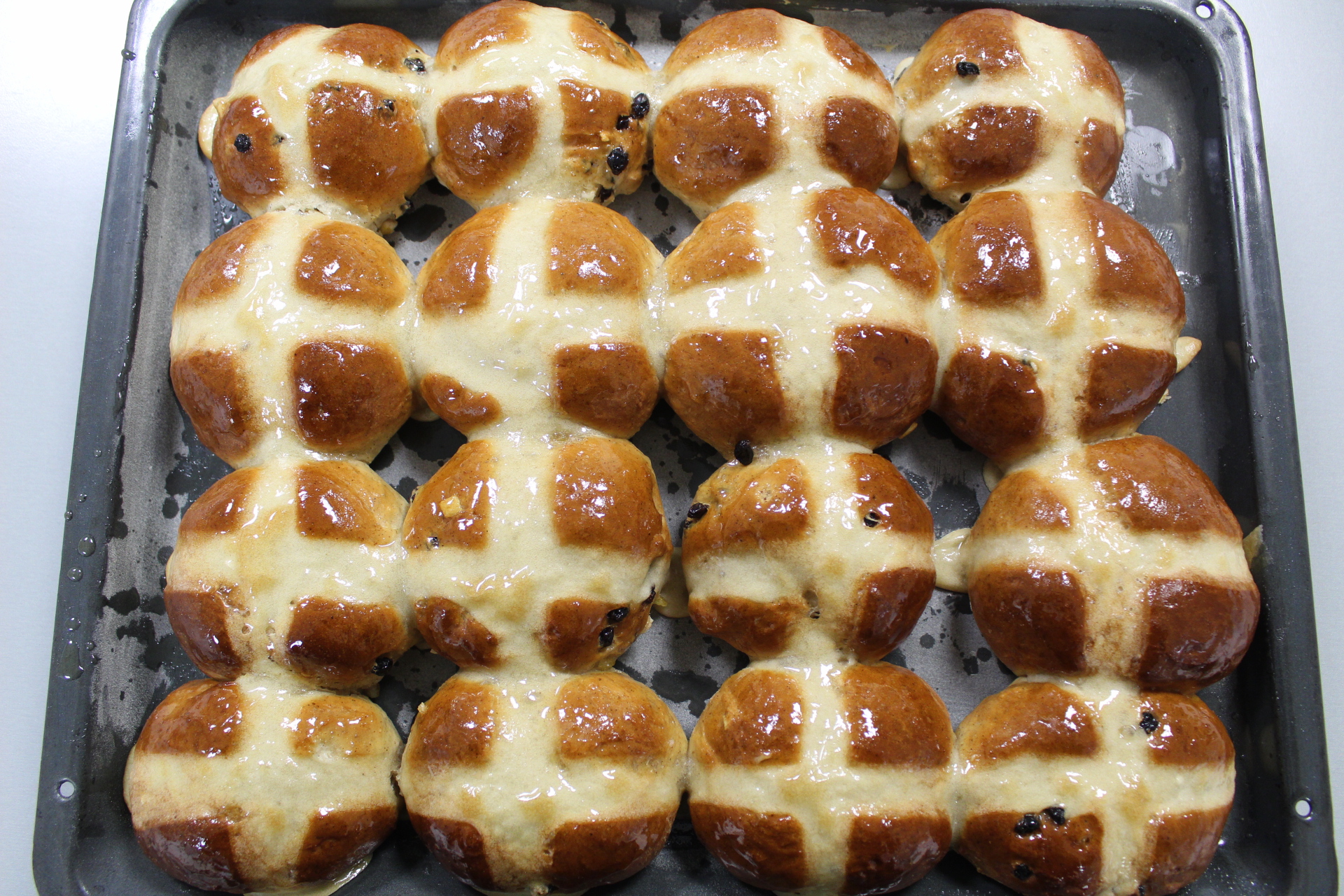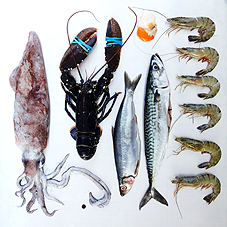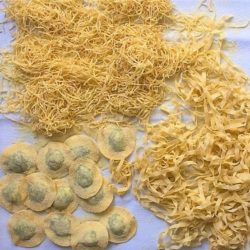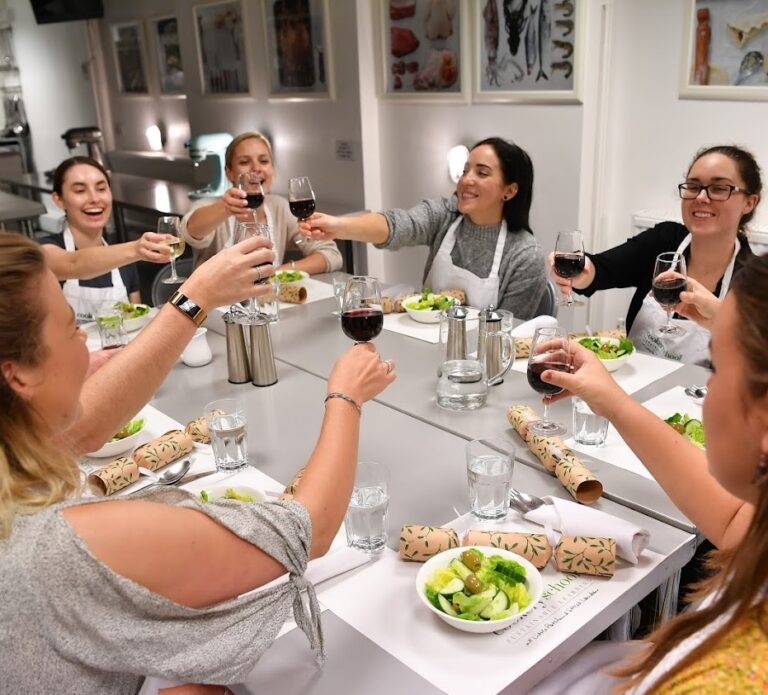RECIPE: Hot cross buns

At Cookery School we teach to empower so that everyone has the confidence to replicate recipes again and again at home. We also teach by principle – if you can understand how to make one soup, you can make a whole range of different soups using the same principle.
During our time at home, in isolation, these principles have never been more pertinent, when we all need to cook a lot more. We will be sharing simple, home-cooked weekly recipes with you, so that your experience of cooking during Covid-19 is a positive one, with new recipes learnt and delicious dishes enjoyed.
Yeast breads: basic principles
• Always use a ‘strong’ flour or bread flour, i.e. a flour that is high in gluten, a protein. Gluten is responsible for giving bread its chewy and bread-like texture.
• In different breads, strong white flour can be replaced with strong granary or wholemeal flour.
• There are three different types of yeast that can be used in bread-making: fresh yeast, dried yeast and quick-dried yeast.
• Fresh yeast should always be dissolved in lukewarm warm water before being added to the flour.
• Dried yeast should also be reconstituted with a little lukewarm water before being added to the flour. It must be dissolved completely before use.
• Quick-dried yeast can be added straight into the flour.
• If using fresh yeast, always use double the quantity of dried yeast for the same recipe. Fresh yeast, because of its water content, is double the weight of dried yeast.
• The temperature of the water is very important in bread-making – too cold and it will inhibit the yeast from working properly; too hot and it will kill the yeast. The best guide is that the water you use in your bread should always be at ‘blood’ or ‘body’ temperature.
• The water used in bread can also be replaced with other liquids, e.g. milk or milk and eggs, etc., for a richer bread. Oils can also be added to breads to provide extra flavour and improved texture.
• Most breads will have two separate ‘rising’ periods. After mixing and kneading, the dough is left to rest in a warm place. This allows the yeast to give off carbon dioxide and the dough rises, usually doubling in size. After the dough has been shaped and is ready to go into the oven, it is given one more rise – this ensures a really good-textured, light bread.
• Bread is best baked in a very hot oven – 220ºC / 425ºF or even higher.
• Always oil your tray well before baking so that the bread doesn’t stick when
removed from the oven.
Hot cross buns
Feeds 16 / Freezer Friendly
Ingredients
450g/1 lb plain flour
1⁄2 oz/12g dried yeast instant yeast
250ml/8ozs pint milk and water (equal quantities of both)
2 teaspoon each cinnamon and nutmeg
1 teaspoon salt
2oz/50g caster sugar
3 oz/75g currants softened by pouring over boiling water then draining
25g/1 oz chopped candied peel
50g/2 oz melted butter or rapeseed oil
1 egg
Method
1. Place flour, sugar, salt, spices and dried instant yeast in a bowl.
2. Warm the milk and water mixture to blood heat.
3. Mix together the melted butter/oil, and beaten eggs and slowly stir in the warmed milk.
4. Add this mixture to the dry ingredients in the bowl and mix together well until a soft dough is formed. If too soft, add a little more flour and if too firm, add a little more milk or water.
5. Knead until a smooth, soft and pliable dough is obtained. Place in an oiled boil.
6. Cover with a folded, damp cloth or plate and leave in a warm place to rise for about 40 minutes.
7. When the mixture has proved by doubling in bulk, add the currants and candied peel to it.
8. Now turn out the dough on to a lightly floured board and cut it into about 14 pieces. Shape
these into balls and place in lines, not too close together so that there is room for them to
expand as they rise, on a greased baking tray.
9. Leave in a warm place for about 20 minutes until the buns are well risen and again doubled in bulk.
10. Using a loose flour and water paste* put into a pastry bag or plastic bag with corner cut off, pipe a cross over each bun. This task is made far easier because the buns are lined up in parallel rows.
11. Place in the centre of a heated oven 400ºF/200ºC for about 15 minutes or until golden brown.
12. As soon as you take the hot cross buns out of the oven, brush them with a sugar and water
glaze**. This gives the characteristic shiny top to the bun.
* Flour and water paste – mix together three tablespoons of flour with sufficient water to make a thickish yet runny paste but not so thick that it is ‘gluggy’. It needs to run easily out of piping bag but, at the same time, have some ‘body’.
** Glaze – place two tablespoons of sugar and two tablespoons of water in a cup and microwave for about 20 seconds or until sugar is dissolved. Paint over hot buns as they come out of oven.
Basic method of bread making
• Mix flour and salt.
• Add yeast.
• Add water and/or oil.
• Knead the dough.
• Leave to rise in a warm place until doubled in volume.
• Shape the dough.
• Leave to rise again.
• Bake.
• Test the bread is ready by tapping its bottom. It should sound hollow.
• Allow to cool on a wire rack.
Cooking during Covid-19
We have a wealth of experience to share in these unprecedented times if you need help cooking during Coronavirus. We’ll be giving you tips and recipes on using store cupboard ingredients, preserving, pickling & above all making the most of your valuable ingredients & not wasting food. PLEASE let us have YOUR questions and SHARE on Facebook or Instagram what you’ve been cooking & our founder Rosalind will be able to get back to you with answers so we can all learn from each other.




